It has never been a better time to get a new credit card with so many credit card sign-up bonuses on offer right now. That means you can earn hundreds of dollars worth of rewards just for signing up and using your new card.
Not only is it an excellent way to boost your credit score if used responsibly, but issuers are hungry to attract new customers which means credit card rewards programs keep getting better. From free airport lounge access, bonus rewards on your account anniversary, to excellent loyalty programs, there’s something for everyone.
This article will be looking at the best credit card sign-up bonuses available right now. We focused on cards that are available to anyone and that are highly rated, helping you land a fantastic reward that you’ll love.
25 Best Credit Card Sign-Up Bonuses for July 2024
Here are the 25 current best credit card bonus offers that you can earn right now:
- Ink Business Unlimited® Credit Card: $750 bonus
- The Business Platinum Card® from American Express: 150,000 bonus points
- Capital One Venture X Rewards Credit Card: 75,000 bonus miles
- The Platinum Card® from American Express: 80,000 bonus points
- Ink Business Preferred® Credit Card: 120,000 bonus points
- Ink Business Cash® Credit Card: up to $750 bonus
- American Express® Gold Card: 60,000 bonus points
- The Blue Business® Plus Credit Card from American Express: 15,000 bonus points
- Chase Sapphire Preferred® Card: 60,000 bonus points
- Capital One Venture X Business: 150,000 bonus miles
- The American Express Blue Business Cash™ Card: $250 statement credit bonus
- Chase Sapphire Reserve®: 60,000 bonus points
- IHG One Rewards Traveler Credit Card: 100,000 bonus points
- Capital One Spark Miles for Business: 50,000 bonus miles
- Blue Cash Preferred® Card from American Express: $250 bonus
- IHG One Rewards Premier Business Credit Card: up to 140,000 bonus points
- Capital One Spark Cash Plus: $1200 bonus
- Capital One Quicksilver Cash Rewards Credit Card: $200 bonus
- Capital One Spark Cash Select for Excellent Credit: $750 bonus
- Capital One VentureOne Rewards Credit Card: 20,000 bonus miles
- Capital One Venture Rewards Credit Card: $250 + 75,000 bonus miles
- World of Hyatt Business Credit Card: 60,000 bonus points
- Blue Cash Everyday® Card from American Express: $200 bonus
- Capital One SavorOne Cash Rewards Credit Card: $200 bonus
- Hilton Honors American Express Card: 70,000 bonus points + Free Night Reward
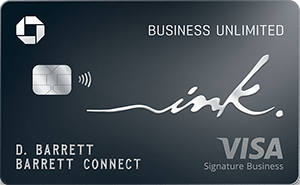 1. Ink Business Unlimited® Credit Card
1. Ink Business Unlimited® Credit Card
In addition to the other card perks like cash back and no annual fee, Chase is offering a $750 bonus to new Ink Business Unlimited® cardholders.
The Ink Business Unlimited Card from Chase offers steady cashback across all categories, so you don’t have to worry about tracking bonus categories or spending caps. It’s a great option for earning modest rewards with a welcome bonus and a host of ongoing incentives for applicants.
Ink Business Unlimited® Credit Card - $750 bonus
The Ink Business Unlimited® Credit Card offer requires you to make purchases using the account's card in order to earn the $750 bonus. Full requirements to receive this bonus are:
- Apply for a new Ink Business Unlimited® credit card using the link below.
- Within 3 months, spend $6,000 using your new card.
- Bonus will be credited within 6 to 8 weeks in the form of 75,000 points, which can be redeemed for $750 cash.
Learn more about the Ink Business Unlimited® Credit Card $750 bonus offer
Learn More:
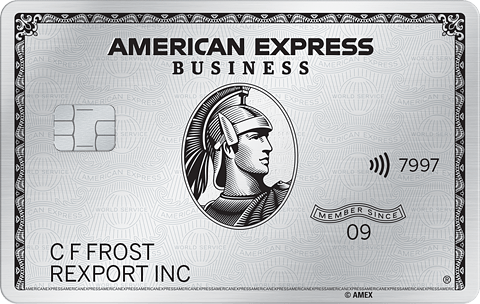 2. The Business Platinum Card® from American Express
2. The Business Platinum Card® from American Express
The Business Platinum Card® from American Express comes with a new cardmember offer that can see you earn 150,000 Membership Rewards® Points after spending $20,000 within the first three months on eligible purchases.
You also get a whole host of other annual perks including up to $400 back per year toward U.S. purchases with Dell Technologies, up to $150 back per year for select business subscription purchases with Adobe, a $200 airline fee credit and more! Enrollment required.
This is in addition to the lounge access and 5x points on airline and hotel purchases through amextravel.com. Terms Apply. Keep in mind, these perks come at a price, as there's a $695 annual fee.
Plus, use your Membership Rewards to Pay with Points for a first class or business class flight with any airline available through American Express Travel and you receive 35% of the points back. Or get 35% of the points back when you book a flight in any class with your pre-selected qualifying airline. *up to 1 million points back per calendar year.
The American Express Business Platinum Card comes with a hefty annual fee, but the luxury card is well worth it for businesses that travel frequently and spend big, with high rewards, credits, and elite hotel and lounge benefits. Terms Apply.
The Business Platinum Card® from American Express - 150,000 bonus points
The The Business Platinum Card® from American Express offer requires you to make purchases using the account's card in order to earn the 150,000 bonus points. Full requirements to receive this bonus are:
- Apply for The Business Platinum Card® from American Express using the link below.
- Within 3 months, spend $20,000 using your new card.
- Bonus will be credited within 8-12 weeks of meeting the requirements in the form of Membership Rewards points.
Learn more about the The Business Platinum Card® from American Express 150,000 bonus points offer
Learn More:
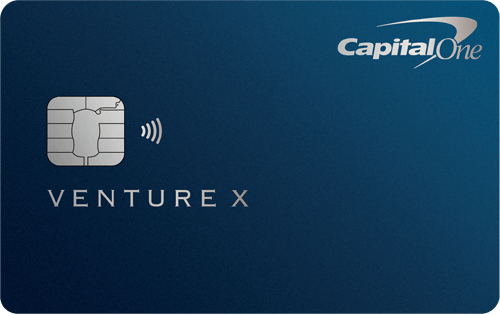 3. Capital One Venture X Rewards Credit Card
3. Capital One Venture X Rewards Credit Card
The Capital One Venture X Rewards Credit Card comes with a 75,000 mile welcome bonus. All you need to do to qualify is make $4,000 worth of purchases within three months of opening the account.
The card has a somewhat high annual fee; however, lower compared to other similar premium cards. Cardholders also enjoy perks such as $300 in statement credits for bookings through Capital One Travel, up to a $100 credit on Global Entry or TSA PreCheck® and access to select airport lounges.
If you’re looking for a travel card with generous bonus category rewards, travel credits, and bonuses, take a look at the Capital One Venture X Rewards Card. It's a happy medium for road warriors who spend enough to offset an annual fee but don't quite want to commit to an elite card.
Capital One Venture X Rewards Credit Card - 75,000 bonus miles
The Capital One Venture X Rewards Credit Card offer requires you to make purchases using the account's card in order to earn the 75,000 bonus miles. Full requirements to receive this bonus are:
- Apply for a new Capital One Venture X Rewards Credit Card using the link below.
- Within 3 months, spend $4,000 using your new card.
- Bonus will be credited to your rewards balance within 2 billing cycles.
Learn more about the Capital One Venture X Rewards Credit Card 75,000 bonus miles offer
Learn More:
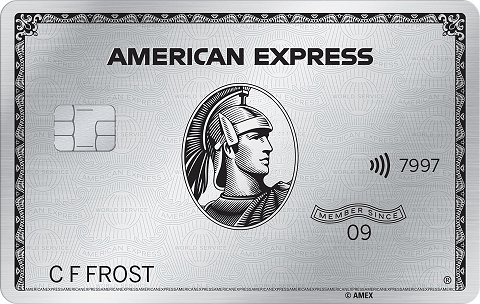 4. The Platinum Card® from American Express
4. The Platinum Card® from American Express
The Platinum Card® from American Express comes with a new cardmember offer that can see you earn 80,000 Membership Rewards® Points after spending $8,000 within the first six months.
You also get a whole host of other annual perks including a $200 back in statement credits each year on prepaid Fine Hotels + Resorts® or The Hotel Collection bookings, (requires a minimum two-night stay), a $240 digital entertainment credit, $200 Uber Cash, a $200 airline fee credit and more! Enrollment required.
This is in addition to the lounge access and 5x Membership Rewards® Points on flights booked directly with airlines or with American Express Travel (up to $500,000 on these purchases per calendar year) and hotel purchases through amextravel.com. (*terms apply).
The Platinum Card from American Express is the original luxury card. While its annual fee is high at $695, so are its luxurious rewards, including Amex Membership Rewards, extensive travel points, and annual statement credits. Terms Apply.
The Platinum Card® from American Express - 80,000 bonus points
The The Platinum Card® from American Express offer requires you to make purchases using the account's card in order to earn the 80,000 bonus points. Full requirements to receive this bonus are:
- Apply for The Platinum Card® from American Express using the link below.
- Within 6 months, spend $8,000 on eligible purchases using your new card.
- Bonus will be credited within 8-12 weeks of meeting the requirements in the form of Membership Rewards points.
Learn more about the The Platinum Card® from American Express 80,000 bonus points offer
Learn More:
 5. Ink Business Preferred® Credit Card
5. Ink Business Preferred® Credit Card
Chase is offering 120,000 bonus points to new Ink Business Preferred® Credit Card cardholders. Those points can be redeemed for $1,200 cash, or $1,500 in travel rewards when redeemed through Chase Travel℠.
To get the points, you will need to make $8,000 worth of purchases in the first three months.
Offering high rewards on bonus categories that can be redeemed via the Ultimate Rewards Program, a sweet welcome bonus, and a handful of premier perks, the Chase Ink Business Preferred Card is an excellent choice for the average business owner who doesn’t mind a small annual fee.
Ink Business Preferred® Credit Card - 120,000 bonus points
The Ink Business Preferred® Credit Card offer requires you to make purchases using the account's card in order to earn the 120,000 bonus points. Full requirements to receive this bonus are:
- Apply for a new Ink Business Preferred® Credit Card using the link below.
- Within 3 months, spend $8,000 using your new card.
- Bonus will be credited within 6 to 8 weeks in the form of 120,000 points, which can be redeemed for $1,200 cash or $1,500 in travel rewards when redeemed through Chase Travel℠.
Learn more about the Ink Business Preferred® Credit Card 120,000 bonus points offer
Learn More:
 6. Ink Business Cash® Credit Card
6. Ink Business Cash® Credit Card
In addition to the other card perks like cash back and no annual fee, Chase is offering up to a $750 bonus to new Ink Business Cash® cardholders.
The Chase Ink Business Cash Card is a great rewards card for small business owners, especially if you rack up a lot of telecom and office supply purchases. Since the card earns Chase Ultimate Rewards, you can redeem them a number of ways, making the fee-free card even more appealing.
Ink Business Cash® Credit Card - up to $750 bonus
The Ink Business Cash® Credit Card offer requires you to make purchases using the account's card in order to earn the $750 bonus. Full requirements to receive this bonus are:
- Apply for a new Ink Business Cash® Credit Card using the link below.
- Within 3 months, spend $3,000 using your new card, earn $350.
- Earn an additional $400 when you spend $6,000 within the first 6 months.
- Bonus will be credited within 6 to 8 weeks in the form of points, which can be redeemed for cash.
Learn more about the Ink Business Cash® Credit Card $750 bonus offer
Learn More:
 7. American Express® Gold Card
7. American Express® Gold Card
The American Express® Gold Card comes with a new cardmember offer that can see you earn 60,000 Membership Rewards® points after spending $6,000 within the first six months on eligible purchases. Plus, receive 20% back in statement credits on eligible purchases made at restaurants worldwide within the first 6 months of Card Membership, up to $100 back. Limited time offer. Offer ends 11/6/24.
Add your Gold Card to your Uber account and each month automatically get $10 in Uber Cash for Uber Eats orders or Uber rides in the U.S., totaling up to $120 per year. Also, receive up to $120 in annual statement credits at participating restaurants, enrollment required. (*terms apply)
The American Express Gold Card is a solid choice for foodies and travelers, offering competitive rewards on restaurant and supermarket buys. The annual fee is well worth it for diners who spend a lot on takeout, restaurants, and groceries; just note the rewards can get a bit complicated. Terms Apply.
American Express® Gold Card - 60,000 bonus points
Expires: November 6, 2024
The American Express® Gold Card offer requires you to make purchases using the account's card in order to earn the 60,000 bonus points. Full requirements to receive this bonus are:
- Apply for a new American Express® Gold Card using the link below.
- Within 6 months, spend $6,000 on eligible purchases using your new card.
- Bonus will be credited within 8-12 weeks of meeting the requirements in the form of Membership Rewards® Points.
Learn more about the American Express® Gold Card 60,000 bonus points offer
Learn More:
 8. The Blue Business® Plus Credit Card from American Express
8. The Blue Business® Plus Credit Card from American Express
The Blue Business® Plus Credit Card from American Express comes with a new cardmember offer that can see you earn 15,000 Membership Rewards® points after spending $3,000 within the first three months on eligible purchases.
You'll also earn 2X Membership Rewards® points on everyday business purchases such as office supplies or client dinners. 2X applies to the first $50,000 in purchases per year, 1 point per dollar thereafter. (*terms apply)
The Blue Business Plus Card from American Express is a great pick for smaller business owners looking for a balance of affordability and benefits, with solid rewards and a range of business perks. Just note that there is a rewards spending cap, which may not be the best fit for larger businesses with bigger budgets. Terms Apply.
The Blue Business® Plus Credit Card from American Express - 15,000 bonus points
The The Blue Business® Plus Credit Card from American Express offer requires you to make purchases using the account's card in order to earn the 15,000 bonus points. Full requirements to receive this bonus are:
- Apply for The Blue Business® Plus Credit Card from American Express using the link below.
- Within 3 months, spend $3,000 on eligible purchase using your new card.
- Bonus will be credited within 8-12 weeks of meeting the requirements in the form of Membership Rewards® Points.
Learn more about the The Blue Business® Plus Credit Card from American Express 15,000 bonus points offer
Learn More:
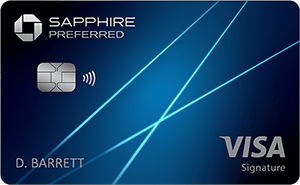 9. Chase Sapphire Preferred® Card
9. Chase Sapphire Preferred® Card
Chase is offering 60,000 bonus points to new Chase Sapphire Preferred® cardholders.
Those points can be redeemed for $600 cash, or they can be stretched to more than $750 if put towards travel through Chase Travel℠.
This is in addition to the revamped points structure that now offers higher rewards in several categories and the $50 annual Chase Travel℠ hotel statement credit.
In the world of travel cards, the Chase Sapphire Preferred Card is hard to beat. Its low annual fee, perks, and travel rewards make it a perfect fit for travelers looking to rack up rewards for their next trip or for seasoned pros looking to combine forces with multiple Chase cards.
Chase Sapphire Preferred® Card - 60,000 bonus points
The Chase Sapphire Preferred® Card offer requires you to make purchases using the account's card in order to earn the 60,000 bonus points. Full requirements to receive this bonus are:
- Apply for a new Chase Sapphire Preferred® credit card using the link below.
- Within 3 months, spend $4,000 using your new card.
- Bonus will be credited within 6 to 8 weeks in the form of 60,000 points, which can be redeemed for $600 cash or more than $750 in travel rewards through Chase Travel℠.
Learn more about the Chase Sapphire Preferred® Card 60,000 bonus points offer
Learn More:
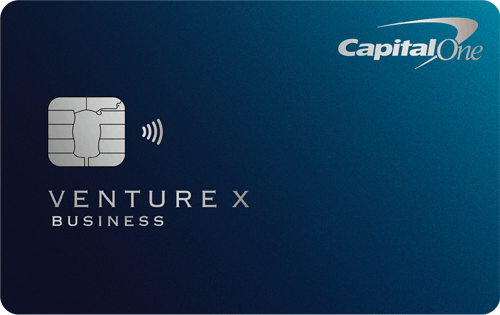 10. Capital One Venture X Business
10. Capital One Venture X Business
The Capital One Venture X Business card comes with a 150,000 mile welcome bonus. The requirements are a little steep: you'll need to make $30,000 worth of purchases within three months of opening.
The card has a somewhat high annual fee ($395); however, lower compared to other similar premium business cards. Cardholders also enjoy perks such as a up to $300 in statement credits for bookings through Capital One Travel, 10,000 bonus miles after your account anniversary date, up to a $100 credit on Global Entry or TSA PreCheck® and access to select airport lounges.
Capital One Venture X Business - 150,000 bonus miles
The Capital One Venture X Business offer requires you to make purchases using the account's card in order to earn the 150,000 bonus miles. Full requirements to receive this bonus are:
- Apply for a new Capital One Venture X Business card using the link below.
- Within 3 months, spend $30,000 using your new card, earn 150,000 bonus miles
- Bonus will be credited to your rewards balance within 2 billing cycles.
Learn more about the Capital One Venture X Business 150,000 bonus miles offer
Learn More:
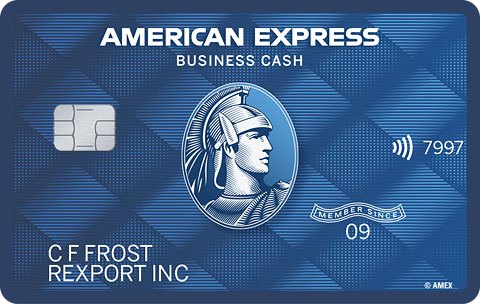 11. The American Express Blue Business Cash™ Card
11. The American Express Blue Business Cash™ Card
The American Express Blue Business Cash™ Card comes with a new cardmember offer that can see you earn a $250 statement credit after spending $3,000 within the first three months on eligible purchases.
You'll also earn 2% cash back on everyday eligible purchases such as office supplies or client dinners. 2% cash back applies to the first $50,000 in purchases per year, then 1%. Terms Apply
While bigger spenders can find more rewarding cards without a spending cap, the Amex Blue Business Cash Card is a great option for small business owners seeking rewards on everyday purchases with a flat interest rate. Terms Apply.
The American Express Blue Business Cash™ Card - $250 statement credit bonus
The The American Express Blue Business Cash™ Card offer requires you to make purchases using the account's card in order to earn the $250 statement credit bonus. Full requirements to receive this bonus are:
- Apply for The American Express Blue Business Cash™ Card using the link below.
- Within 3 months, spend $3,000 using your new card.
- Bonus will be credited within 8-12 weeks of meeting the requirements in the form of a statement credit
Learn more about the The American Express Blue Business Cash™ Card $250 statement credit bonus offer
Learn More:
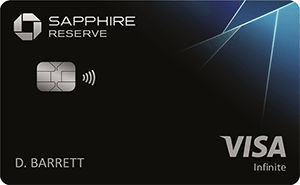 12. Chase Sapphire Reserve®
12. Chase Sapphire Reserve®
Chase is offering 60,000 bonus points to new Chase Sapphire Reserve® cardholders. Those points can be redeemed for $600 cash, or they can be stretched to $900 if you put them toward travel through Chase Travel℠.
The Chase Sapphire Reserve card is one of the best travel cards on the market, with a ton of premiere perks like lounge access, excellent rewards, and account credits. If you’re a frequent traveler and take advantage of all the card has to offer, you can easily offset the annual fee.
Chase Sapphire Reserve® - 60,000 bonus points
The Chase Sapphire Reserve® offer requires you to make purchases using the account's card in order to earn the 60,000 bonus points. Full requirements to receive this bonus are:
- Apply for a new Chase Sapphire Reserve ® credit card using the link below.
- Within 3 months, spend $4,000 using your new card.
- Bonus will be credited within 6 to 8 weeks in the form of 60,000 points, which can be redeemed for $600 cash or $900 in travel rewards through Chase Travel℠.
Learn more about the Chase Sapphire Reserve® 60,000 bonus points offer
Learn More:
 13. IHG One Rewards Traveler Credit Card
13. IHG One Rewards Traveler Credit Card
Chase is currently offering 100,000 bonus points to new IHG One Rewards Traveler Credit Card cardholders.
The 100,000 points is enough for 3 free nights at an IHG property, which includes hotels and resorts under the brands Six Senses, Regent, InterContinental, Kimpton, Hotel Indigo, Voco, Hualuxe, Crowne Plaza, Holiday Inn, Candlewood Suites, and more. Not bad for a card with no annual fee!
The IHG One Rewards Traveler Card from Chase doles out a high reward for IHG stays, along with bonus categories for everyday spending. If you’re an IHG regular who wants to earn when you book trips without having to pay an annual fee, this card could be a valuable addition to your wallet.
IHG One Rewards Traveler Credit Card - 100,000 bonus points
The IHG One Rewards Traveler Credit Card offer requires you to make purchases using the account's card in order to earn the 100,000 bonus points. Full requirements to receive this bonus are:
- Apply for a new IHG One Rewards Traveler Credit Card using the link below.
- Within 3 months, spend $2,000 using your new card.
- Bonus points will be credited to your IHG® Rewards account within 6 to 8 weeks.
Learn more about the IHG One Rewards Traveler Credit Card 100,000 bonus points offer
Learn More:
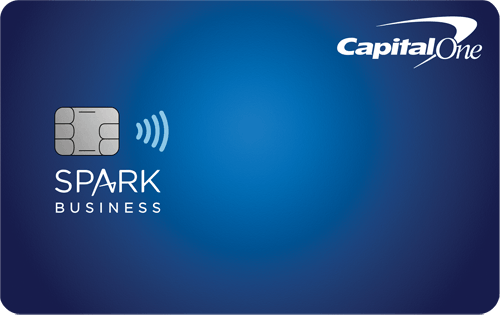 14. Capital One Spark Miles for Business
14. Capital One Spark Miles for Business
If you're in the market for a low-annual-fee business credit card that offers solid reward miles on all purchases and elevated earnings on hotel and rental car purchases, check out Capital One Spark Miles business card from Capital One.
This offer lets new cardholders earn a one-time 50,000 miles bonus, in addition to earning unlimited 2X miles for your business on every purchase with no limits or category restrictions and unlimited 5X miles on hotels and rental cars booked through Capital One Travel.
To earn the bonus, you'll need to spend $4,500 using your new card – and you'll have 3 months to meet that requirement. They have another offer on the same card that's only 20,000 bonus miles if a no-annual fee card and an introductory 0% APR for the first 9 months is more appealing to you.
Like most credit card promotions from Capital One, you'll also need to be a completely new cardholder – previous account holders aren't eligible.
With the Capital One Spark Miles for Business card, small business owners who don't want to worry about bonus categories can earn straightforward travel rewards, getting the same amount of miles on every purchase.
Capital One Spark Miles for Business - 50,000 bonus miles
The Capital One Spark Miles for Business offer requires you to make purchases using the account's card in order to earn the 50,000 bonus miles. Full requirements to receive this bonus are:
- Apply for a new Capital One Spark Miles business credit card via the link below.
- In the first 3 months, spend $4,500
- Bonus will be applied to your rewards balance within two billing cycles after meeting the requirements.
Learn more about the Capital One Spark Miles for Business 50,000 bonus miles offer
Learn More:
 15. Blue Cash Preferred® Card from American Express
15. Blue Cash Preferred® Card from American Express
American Express has quite a few welcome offers on their credit cards, starting with their Blue Cash Preferred Card. Here you can earn $250 back as a statement credit after making $3,000 worth of eligible purchases within the first six months.
The card offers 6% back at U.S. super markets (on up to $6,000 per year in purchases, then 1%), 6% on select U.S. streaming subscriptions, 3% on U.S. transit and gas stations, and 1% on all other eligible purchases. *terms apply.
Once you've earned at least $25, you can choose to receive your rewards as statement credits, gift cards or merchandise. The card does come with a $0 intro annual fee for the first year, then $95.
Cash back is credited as Reward Dollars that can be redeemed for statement credits or at Amazon.com checkout.
Families with large grocery bills can rack up some serious cash back rewards with the American Express Blue Cash Preferred Card. The card is also also great for rewards on streaming services, gas, and transit costs. Terms Apply.
Blue Cash Preferred® Card from American Express - $250 bonus
The Blue Cash Preferred® Card from American Express offer requires you to make purchases using the account's card in order to earn the $250 bonus. Full requirements to receive this bonus are:
- Apply for a new Blue Cash Preferred® Card using the link below.
- Within 6 months, spend $3,000 on eligible purchases using your new card to earn $250 as a statement credit.
- Bonus will be credited within 8-12 weeks of meeting the requirements in the form of statement credit on Amazon.com at checkout.
Learn more about the Blue Cash Preferred® Card from American Express $250 bonus offer
Learn More:
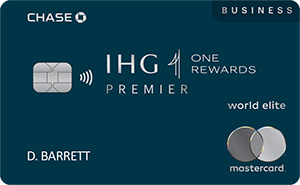 16. IHG One Rewards Premier Business Credit Card
16. IHG One Rewards Premier Business Credit Card
When IHG recently revamped its reward programs, it also introduced changes to its credit card lineup – including the introduction of this business equivalent to its personal IHG® Rewards Premier credit card. The personal card's perks, earnings rates, and introductory bonus offer were all improved – and all of that was cloned to this card for business owners.
As a new IHG One Rewards Premier Business Credit Card cardholder, earn 140,000 Bonus Points after spending $4,000 on purchases in the first 3 months from account opening. That's nearly 5 free nights at an IHG property, which includes hotels and resorts under the brands Six Senses, Regent, InterContinental, Kimpton, Hotel Indigo, Voco, Hualuxe, Crowne Plaza, Holiday Inn, Candlewood Suites, and more.
Additionally, you can get an extra $100 statement credit and 10,000 bonus points every year by spending $20,000 using your card and then making one additional purchase at least one day after you meet the $20k threshold.
The IHG One Rewards Premier Business Card is a smart addition to your wallet if you’re a small business owner who can book regular stays at IHG properties. The welcome bonus, generous rewards, and perks like a free night’s stay each year help to justify the low annual fee for IHG loyalists.
IHG One Rewards Premier Business Credit Card - up to 140,000 bonus points
The IHG One Rewards Premier Business Credit Card offer requires you to make purchases using the account's card in order to earn the 140,000 bonus points. Full requirements to receive this bonus are:
- Apply for a new IHG One Rewards Premier Business Credit Card using the link below.
- Within 3 months, spend $4,000 using your new card, earn 140,000 points.
- Bonus points will be credited to your IHG® Rewards account within 6 to 8 weeks.
Learn more about the IHG One Rewards Premier Business Credit Card 140,000 bonus points offer
Learn More:
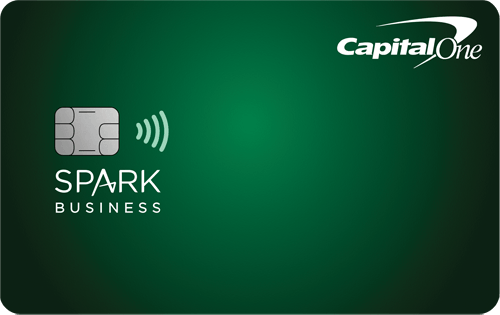 17. Capital One Spark Cash Plus
17. Capital One Spark Cash Plus
If you're in the market for a low-annual-fee business credit card that offers solid cash back on all purchases and elevated earnings on hotel and rental car purchases, check out Capital One Spark Cash Plus from Capital One.
This offer lets new cardholders earn a one-time bonus of $1,200, in addition to earning unlimited 2.0% cash back for your business on every purchase with no limits or category restrictions and unlimited 5% cash back on hotels and rental cars booked through Capital One Travel.
What's more? As if that isn't enough, this card will keep rewarding you with an annual fee refund every year you spend $150,000.
Like most credit card promotions from Capital One, you'll also need to be a completely new cardholder – previous account holders aren't eligible.
The information found on this page was not provided by Capital One.
The Capital One Spark Cash Plus Card is a good fit for small business owners who want a straightforward hassle-free rewards card and some nice bookkeeping benefits. It isn’t the best pick for big spenders, who could earn higher rewards in bonus categories—with an annual fee—elsewhere.
Capital One Spark Cash Plus - $1200 bonus
The Capital One Spark Cash Plus offer requires you to make purchases using the account's card in order to earn the $1200 bonus. Full requirements to receive this bonus are:
- Open a new Capital One Spark Cash Plus credit card using the link below.
- Within the first 3 months, spend $30,000, earn $1,200.
- Going forward, get your $150 annual fee refunded every year you spend at least $150,000
Learn more about the Capital One Spark Cash Plus $1200 bonus offer
Learn More:
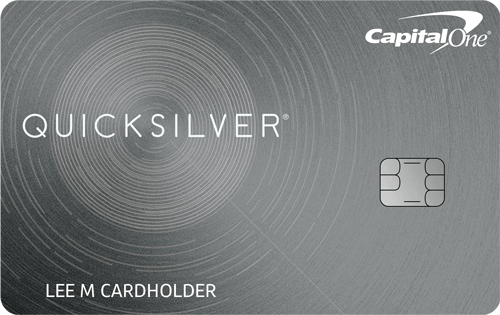 18. Capital One Quicksilver Cash Rewards Credit Card
18. Capital One Quicksilver Cash Rewards Credit Card
The Capital One Quicksilver Cash Rewards Credit Card comes with a $200 welcome bonus. All you need to do to qualify is make $500 worth of purchases within three months of opening the account.
The card has no annual fee, and cardholders also enjoy experiences such as VIP tickets and 5-star meals, among other perks.
The Capital One Quicksilver Cash Rewards Credit Card is a straightforward option, with a decent flat interest rate across all spending categories. While some cards offer more cash back and perks, it's a good choice if you don’t want to worry about tracking your spending in bonus categories.
Capital One Quicksilver Cash Rewards Credit Card - $200 bonus
The Capital One Quicksilver Cash Rewards Credit Card offer requires you to make purchases using the account's card in order to earn the $200 bonus. Full requirements to receive this bonus are:
- Apply for a new Capital One Quicksilver Cash Rewards Credit Card using the link below.
- Within 3 months, spend $500 using your new card.
- Bonus will be credited to your rewards balance within 2 billing cycles.
Learn more about the Capital One Quicksilver Cash Rewards Credit Card $200 bonus offer
Learn More:
 19. Capital One Spark Cash Select for Excellent Credit
19. Capital One Spark Cash Select for Excellent Credit
If you're in the market for a zero-annual-fee business credit card that offers solid cash back on all purchases and elevated earnings on hotel and rental car purchases, check out Capital One Spark Select for Excellent Credit from Capital One.
This offer lets new cardholders earn a one-time $750 bonus, in addition to earning unlimited 1.5% cash back for your business on every purchase with no limits or category restrictions and unlimited 5% cash back on hotels and rental cars booked through Capital One Travel.
To earn the bonus, you'll need to spend $6,000 using your new card – and you'll have 3 months to meet that requirement.
Like most credit card promotions from Capital One, you'll also need to be a completely new cardholder – previous account holders aren't eligible.
The Capital One Spark Cash Select Card is a good fit for small business owners who want a straightforward hassle-free rewards card with no cost and some nice bookkeeping benefits. It isn't the best pick for big spenders, who could earn higher rewards in bonus categories—with an annual fee—elsewhere.
Capital One Spark Cash Select for Excellent Credit - $750 bonus
The Capital One Spark Cash Select for Excellent Credit offer requires you to make purchases using the account's card in order to earn the $750 bonus. Full requirements to receive this bonus are:
- Apply for a new Capital One Spark Select for Excellent Credit credit card using the link below.
- Within 3 months, spend $6,000 using your new card.
- Bonus will be applied to your rewards balance within two billing cycles after meeting the requirements.
Learn more about the Capital One Spark Cash Select for Excellent Credit $750 bonus offer
Learn More:
 20. Capital One VentureOne Rewards Credit Card
20. Capital One VentureOne Rewards Credit Card
The Capital One VentureOne Rewards Credit Card comes with a 20,000 mile welcome bonus. All you need to do to qualify is make $500 worth of purchases within three months of opening the account.
The card has no annual fee, and cardholders also enjoy experiences such as VIP tickets and 5-star meals, among other perks.
The Capital One VentureOne Rewards Card is worth considering if you want a fee-free card that earns flat-rate miles on all your purchases with a handful of perks. But if you don't mind paying an annual fee and have solid credit, there are cards with more lucrative benefits.
Capital One VentureOne Rewards Credit Card - 20,000 bonus miles
The Capital One VentureOne Rewards Credit Card offer requires you to make purchases using the account's card in order to earn the 20,000 bonus miles. Full requirements to receive this bonus are:
- Apply for a new Capital One VentureOne Rewards Credit Card using the link below.
- Within 3 months, spend $500 using your new card.
- Bonus will be credited to your rewards balance within 2 billing cycles.
Learn more about the Capital One VentureOne Rewards Credit Card 20,000 bonus miles offer
Learn More:
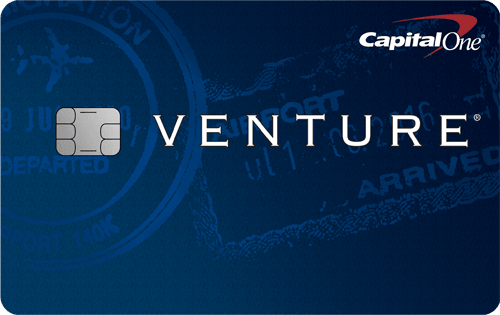 21. Capital One Venture Rewards Credit Card
21. Capital One Venture Rewards Credit Card
The Capital One Venture Rewards Credit Card comes with a 75,000 mile welcome bonus, but that's not all! For a limited time, they are including $250 to use on Capital One Travel in your first cardholder year, that's equal to $1,000 in travel! All you need to do to qualify is make $4,000 worth of purchases within three months of opening the account.
The card has small annual fee; however, on par compared to other similar premium cards. Cardholders also enjoy many perks such as up to a $100 credit for Global Entry or TSA PreCheck®, no foreign transaction fees and travel accident insurance.
The Capital One Venture Rewards Card is an advantageous travel rewards card if you’re looking for straightforward flat-rate miles on all purchases, rather than just travel or other bonus categories. It also offers the option to earn higher rewards when you book trips through Capital One Travel and provides some rewarding travel benefits.
Capital One Venture Rewards Credit Card - $250 + 75,000 bonus miles
The Capital One Venture Rewards Credit Card offer requires you to make purchases using the account's card in order to earn the $250 + 75,000 bonus miles. Full requirements to receive this bonus are:
- Apply for a new Capital One Venture Rewards Credit Card using the link below.
- Within 3 months, spend $4,000 using your new card.
- Bonus will be credited to your rewards balance within 2 billing cycles.
Learn more about the Capital One Venture Rewards Credit Card $250 + 75,000 bonus miles offer
Learn More:
 22. World of Hyatt Business Credit Card
22. World of Hyatt Business Credit Card
The World of Hyatt Business credit card is a relatively new co-branded business card from Chase and Hyatt, and they're offering 60,000 bonus points to new cardholders. 60,000 points is still enough to cover the cost of up to 12 nights at a category 1 hotel.
Plus, this is in addition to the other great perks of the card. Keep in mind, however, that the card has a $199 annual fee which is not waived in the first year (unlike many other annual-fee cards) – so factor that in accordingly.
If you’re partial to Hyatt properties and your business takes you on the road often, the World of Hyatt Business Card from Chase should be on your radar as a tool to help you save and work your way up to elite status. You’ll also enjoy competitive rewards and exclusive perks.
World of Hyatt Business Credit Card - 60,000 bonus points
The World of Hyatt Business Credit Card offer requires you to make purchases using the account's card in order to earn the 60,000 bonus points. Full requirements to receive this bonus are:
- Apply for a new World of Hyatt Business credit card using the link below.
- Within 3 months, spend $5,000 using your new card, earn 60,000 Points.
- Bonus points will be credited to your World of Hyatt account within 6 to 8 weeks of meeting the requirement.
Learn more about the World of Hyatt Business Credit Card 60,000 bonus points offer
Learn More:
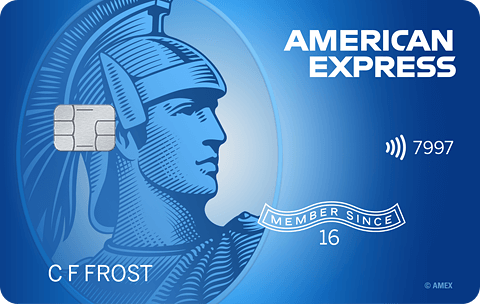 23. Blue Cash Everyday® Card from American Express
23. Blue Cash Everyday® Card from American Express
Blue Cash Everyday® Card is another personal credit card from American Express, offering new members the ability to earn a $200 welcome offer.
Blue Cash Everyday® Card from American Express is a rewards credit card that offers 3% back on groceries at U.S. supermarkets (on first $6,000 per year, then 1%), 3% at U.S. gas stations (on first $6,000 per year, then 1%), 3% cash back on U.S. online retail purchases (on first $6,000 per year, then 1%), and 1% on every other eligible purchase. Terms Apply.
Cash back is credited as Reward Dollars that can be redeemed for statement credits or at Amazon.com checkout.
If you don’t want to deal with a steep annual fee, the American Express Blue Cash Everyday Card is an excellent starter card for rewards on groceries, gas, and retail purchases. Terms Apply.
Blue Cash Everyday® Card from American Express - $200 bonus
The Blue Cash Everyday® Card from American Express offer requires you to make purchases using the account's card in order to earn the $200 bonus. Full requirements to receive this bonus are:
- Apply for a new Blue Cash Everyday® Card using the link below.
- Within the first 6 months, spend $2,000 using your new card to earn $200 as a statement credit.
- Bonuses will be credited within 8-12 weeks of meeting the requirements.
Learn more about the Blue Cash Everyday® Card from American Express $200 bonus offer
Learn More:
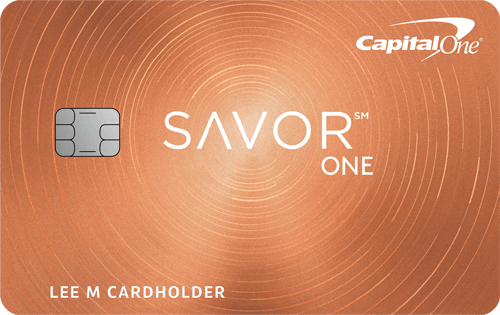 24. Capital One SavorOne Cash Rewards Credit Card
24. Capital One SavorOne Cash Rewards Credit Card
If you're in the market for a zero-annual-fee credit card that offers solid cash back on food and experiences, check out the SavorOne Rewards from Capital One.
In addition to an introductory 0% APR for the first 15 months, Capital One is offering new cardholders a one-time $200 bonus.
To earn the cash, you'll need to spend just $500 using your new card – and you'll have 3 months to meet that requirement. Like most credit card promotions from Capital One, you'll also need to be a completely new cardholder – previous account holders aren't eligible.
The Capital One SavorOne Cash Rewards card is a favorite for foodies and entertainment seekers. With generous uncapped cash back and a wealth of other benefits, it’s worth adding to your wallet if you spend big in these categories.
Capital One SavorOne Cash Rewards Credit Card - $200 bonus
The Capital One SavorOne Cash Rewards Credit Card offer requires you to make purchases using the account's card in order to earn the $200 bonus. Full requirements to receive this bonus are:
- Apply for a new SavorOne Rewards from Capital One using the link below.
- Within 3 months, spend $500 using your new card.
- Bonus will be applied to your rewards balance within two billing cycles after meeting the requirements.
Learn more about the Capital One SavorOne Cash Rewards Credit Card $200 bonus offer
Learn More:
 25. Hilton Honors American Express Card
25. Hilton Honors American Express Card
The Hilton Honors American Express Card comes with a new cardmember offer that can see you earn 70,000 Hilton Honors bonus points after spending $2,000 in the first six months. This time around they are also tacking on a Free Night Reward as part of the bonus after meeting the requirements.
This is in addition to the $0 annual fee, the solid reward categories, and the card's other perks. This is solid deal on this card compared to recent offers. (*terms apply).
If you’re looking for Hilton benefits without shelling out money for an annual fee, the Hilton Honors American Express Card delivers. While the card doesn’t offer all the perks of higher tier travel cards, it provides cardholders with automatic Silver Status. Terms Apply.
Hilton Honors American Express Card - 70,000 bonus points + Free Night Reward
Expires: July 31, 2024
The Hilton Honors American Express Card offer requires you to make purchases using the account's card in order to earn the 70,000 bonus points + Free Night Reward. Full requirements to receive this bonus are:
- Apply for a new Hilton Honors American Express Card using the link below.
- Within 6 months, spend $2,000 using your Hilton Honors American Express Card.
- Bonus will be credited within 8-12 weeks of meeting the requirements in the form of Hilton Honors points.
Learn more about the Hilton Honors American Express Card 70,000 bonus points + Free Night Reward offer
Learn More:
See today’s best deals and apply now for these credit cards at CardRatings.com!
Restrictions on Credit Card Bonus Offers
Each credit card issuer has its own rules for how often a consumer can earn a welcome bonus. This is to keep customers from “churning” bonus offers or, in other words, from signing up multiple times for a card strictly to earn the bonus, with no intention of actually using it long-term.
Generally speaking, the restrictions are reasonable. If you’re an average consumer looking for a great new credit card (that also happens to pay you to sign up…), then you’re likely just fine.
For clarity, however, here are some of the rules from the major banks:
- Chase: Chase is well known for its 5/24 rule, which says cardholders cannot get a new Chase credit card if they have 5 credit card inquiries in the last 24 months. This is why many will advise you to sign up for any Chase credit cards first, before moving onto other issuers. Beyond the 5/24 rule, Chase limits the bonus per card to once every 2 years.
- Amex: American Express has a lifetime limit stating that you can only earn a bonus on each of their cards once. To make that clearer: you can earn a bonus from multiple cards, but never multiple bonuses for the same card.
- Capital One: Capital One limits you to two personal credit cards, and you can only get a new credit card from them once every six months.
- Citibank: Like Chase, Citi limits you to a sign-up bonus once every 2 years per card. For some card categories, this 2-year restriction crosses multiple cards. For example, the fine print on the Citi Rewards+® bonus says that you’re excluded if you’ve already earned a welcome bonus for Citi ThankYou® Preferred, Citi Premier® or Citi Prestige® cards.
- Bank of America: Bank of America has a 2/3/4 rule, which limits you to two new cards in a 30-day period, three in a 12-month period, and four in a 24-month period. They’ve also added a 24-month rule similar to Chase and Citi, that says you can’t sign up for a card that you have or had in the past 2 years.
- Wells Fargo: Once you get any welcome offer from a Wells Fargo credit card, you can no longer get another for 15 months. Unlike the other banks, this is across the board, not on a per-card basis.
How To Pick The Best Credit Card Sign-Up Bonus
With so many credit card offers out there, how do you decide which to apply for first?
Picking the highest reward isn’t always the answer – and, in fact, when you’re comparing point or mile offers, it can be hard to know which bonus even is the most valuable. Here are some tips:
- Issuer Limitations. If you’re planning to open more than one credit card, you should start here first. Like we mentioned above, many banks have rules around how many cards you can open in a given timeframe. Knowing these rules upfront can help you strategize about which sign-up bonus to go after first. For example, many will apply for a Chase credit card first to avoid being denied because of the infamous 5/24 rule.
- Spending Requirement. Compare the spending requirement for each offer against your normal budget. If you’d need to make otherwise unplanned purchases, the sign-up bonus isn’t worth it. Go for bonuses that fit into your normal spending, or time them for when you have big purchases planned.
- Annual Fee. Often, the highest credit card bonuses are for cards with annual fees. If the card offers perks and benefits that are worthwhile to you, then great! But don’t pay for a premium travel card if you don’t travel regularly just because of a seemingly killer welcome bonus.
- Reward Value. This is where credit card welcome bonuses get tricky, compared to regular checking account bonus offers or savings account bonuses. While cash-back cards often offer a cash reward, travel and reward credit cards typically offer bonus points or miles. Sometimes you can redeem these for cash, but not always. If you’re comparing credit cards, be mindful that you’re earning useful rewards. For example, pick cards that offer rewards for hotels or airlines that you’re already loyal to. If you want flexibility, then opt for programs that have robust redemption options and partner networks. That way, when you’re ready to cash in, you can choose between travel, gift cards, or transfers to airline and hotel partners. Chase Ultimate Rewards and American Express Membership Rewards are among the best.
Credit Card Sign-Up Bonuses FAQs
What is a credit card sign-up bonus?
A sign-up bonus is a promotion that banks use to attract new customers. They’re designed to get you using the card (which is why the requirements are so often tied to spending a certain amount) so that the card takes a permanent seat in your wallet. In exchange for opening a new card and meeting the spend requirement, the credit card issuer gives you a bonus. This can be in miles, points, or cash.
How do I earn a credit card bonus?
Each bonus comes with some form of qualification criteria. In most cases, you need to spend a certain amount of money within a given time period to qualify.
How do I redeem a credit card welcome offer?
After meeting the requirements, the credit card issuer will deposit the bonus miles or points into your reward account. You can then redeem these the same way you would any other points or miles you earn: flights, upgrades, transfer to partner programs, etc.
For cash offers, these are typically seen as credits into your rewards account. You can then redeem these for statement credits (which reduce what you owe), gift cards, or checks/withdrawals straight to your checking account.
Each program is slightly different, so be sure to check the terms to find the full details.
Which issuer has the best credit card sign-up bonuses?
Credit card issuers are constantly changing their offers, and therefore the “best” bonus is too. Generally speaking, however, travel, business, and cards with annual fees will typically have the highest bonuses.
Cash back or entry level cards will have smaller welcome offers, but the spending requirements are often lower, as well.
You should also consider what you value – you can often squeeze more value from miles or points if you redeem them for travel, but if you prefer cash value, you’ll want a credit card that rewards you with statement credits or checks.
How can I spend enough for my credit card bonus?
When deciding how or if you can spend enough to meet the requirement, consider regular purchases you make – groceries, gas, memberships, services, etc. Or, time the reward to coincide with when you need to make a larger purchase anyway – a new laptop, furniture, equipment.
Either way, make sure you understand what constitutes an eligible purchase. These will be detailed in the fine print. Generally speaking, any standard purchase of goods or services will count.
Fees, interest, cash advances, traveler’s checks, prepaid cards or gift cards, or any other purchase of cash equivalents will not.
Also, be mindful about whether you would have bought these things or services anyway. Spending money you otherwise would have saved makes a bonus much less valuable.
Which credit cards have the best rewards?
Ultimately, the best rewards are the ones that you are going to use. If you do not travel a lot, earning free airline credits or lounge passes might not be the best reward for you. But if you’re something of a jet setter, then saving on your airfare might be a blessing.
Rewards can vary a lot from one credit card to the next. As such, you should pick the card that offers rewards you will actually find helpful (versus picking a card simply for the welcome bonus) and apply now so you can start reaping the rewards right away.
Are credit card rewards taxable?
Unlike regular bank bonuses, credit card rewards are typically treated as a rebate or discount by the IRS, rather than income. So no, earning a welcome bonus for opening a new credit card is not usually taxable.
To view rates and fees of the The Platinum Card® from American Express, see this page
To view rates and fees of the American Express® Gold Card, see this page
To view rates and fees of the Blue Cash Preferred® Card from American Express, see this page
To view rates and fees of the Blue Cash Everyday® Card from American Express, see this page
To view rates and fees of The Business Platinum Card® from American Express, see this page
To view rates and fees of The Blue Business® Plus Credit Card from American Express, see this page
To view rates and fees of The American Express Blue Business Cash™ Card, see this page
To view rates and fees of the Hilton Honors American Express Surpass® , see this page
To view rates and fees of the Amex EveryDay® Preferred, see this page
This content is not provided by any company mentioned in this article. Any opinions, analyses, reviews or recommendations expressed here are those of the author’s alone, and have not been reviewed, approved or otherwise endorsed by any such company. BankBonus.com does not review every company or every offer available on the market.
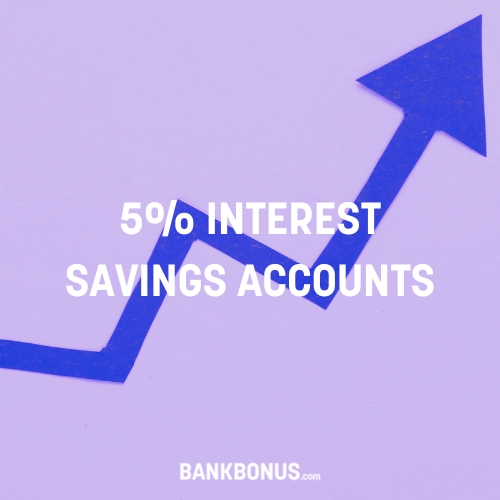




Comments are closed.
Comments are closed here.